Billions of people in developing countries live with crushing poverty. In fact, 1.4 billion people don’t have access to digital financial services, despite most owning a mobile phone. Just like everyone else, they need access to affordable transactions, loans, secure savings accounts, insurance and other financial services to build better futures.
Mobile Technology Alone Won’t Solve the Problem
While the majority of underbanked people own mobile phones that could potentially provide access to a variety of online financial services, they face two barriers: typically, the fees are too high to send money to others using out-of-network banks and mobile money providers, and often the banking and mobile money services don’t extend to rural areas.
The problem is that digital banking and mobile money financial service providers face cost barriers to building out services that reach the last mile of underbanked people. To solve this problem, digital public goods, such as Mojaloop open source software, enable central banks, financial institutions and hub operators to lower the cost of designing, developing and implementing connected digital financial services to an entire population. Mojaloop technology enables inclusive instant interoperable payment systems (IIPS) by making unlike systems work together, so sending money across platforms is more available, affordable, accessible and as easy as sending a text message.
IIPS Offers a New Hope
The use of instant interoperable payment systems (IPS) offers a new opportunity to bridge the gap between those who have access to the digital economy and those who don’t. There are many IPS providers, but those that are inclusive offer an easy way for any person to pay another, such as by simply texting money to another person, from any type of financial institution, big or small, urban or rural, national or local.
The resulting network effects mean more of the underbanked are looped into the entire digital economy, and central banks, financial institutions and hub operators can see an increase in customers while lowering the cost of their services. The recent growth of the Unified Payment Interface (UPI) is a great example of this; their transactions have grown by 70 percent in just over four years (2017–2021) in India.
Key Takeaways from the Discussion
As part of a Financial Inclusion Week, the Mojaloop Foundation brought together a panel of five experts to talk about inclusive IIPS, its challenges and the way forward. Here are some of the key takeaways of the panel “Instant Interoperable Payment Systems – Bridging or Widening the Digital Divide?”:
- As instant payment systems grow, they’re not going to automatically be inclusive. They have to be designed that way.
- In most developing markets, the only source of a financial track record for the underbanked is from IIPS digital payment providers. Because digital financial services like lending and insurance require data, these digital payment services are the driver of financial inclusivity and not just a use case. (I invite anyone who disagrees to get in touch for a debate.)
- One of the challenges to IIPS adoption is that larger banks are hesitant to become a part of financial ecosystems that include the very small financial institutions that rural citizens rely on. Finding a way to manage the risks that small and micro-financial institutions can present to large banks is essential to creating a truly inclusive system.
- Involving smaller institutions at the start not only helps ensure inclusivity but can also help them manage their financial risks and ensure larger banks can be comfortable with how the risks are being managed. Small service providers like micro-finance institutions (MFIs) and savings and credit co-operatives (SACCOs) can sometimes involve more risk for a number of reasons, and those risks should be addressed centrally.
Want to watch the discussion for yourself? You’ll find the full video right here.
The Experts
The panel included private, academic, and non-profit organizations experts.
- Steve Haley (Moderator), Director of Market Development and Partnerships, Mojaloop Foundation. Follow Steve on LinkedIn
- Michael Mbuthia, Regional Director for East & Southern Africa, AfricaNenda (A Bill & Melinda Gates Foundation Funded Program). Follow Michael on LinkedIn
- Nyi Nyein Aye, CEO and Co-Founder, ThitsaWorks. Visit the ThitsaWorks website
- Russell Toth, Development Economist, University of Sydney. Follow Russell on LinkedIn
- Paul Makin, Product Manager, Mojaloop Foundation. Follow Paul on LinkedIn


